Can’t cross the same bridge twice
May 16, 2025, 6:43 am , by Richard Lutz
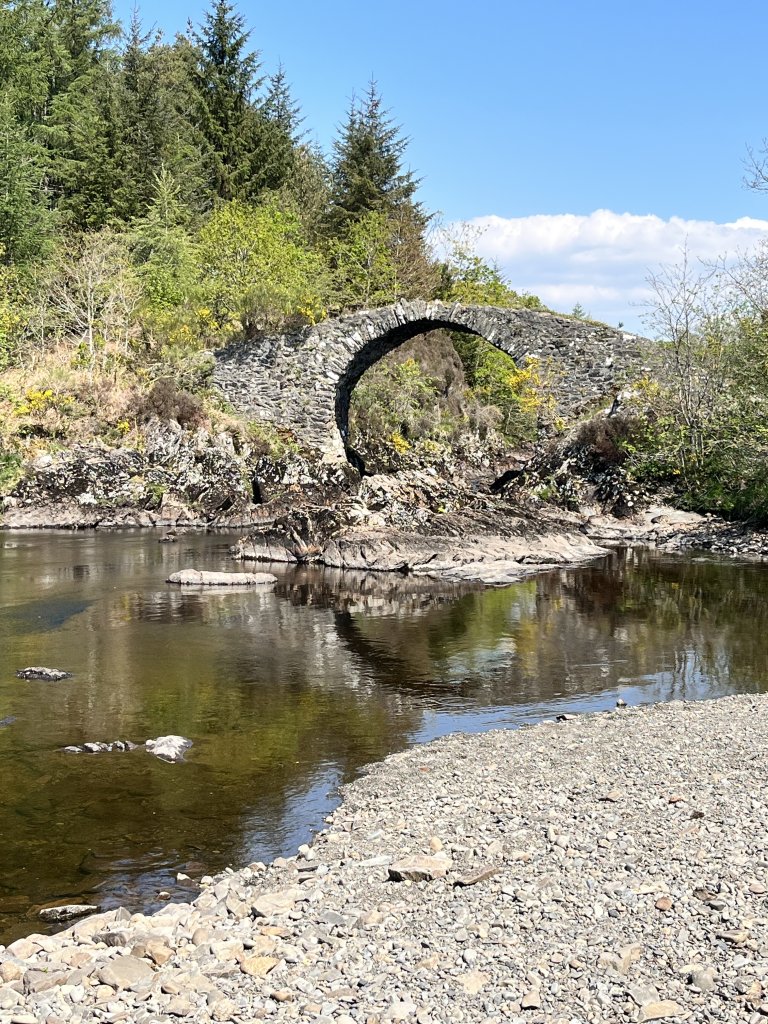
Richard Lutz follows a lost Scottish path…again
I’m returning to an old stone bridge. I wrote about it last month. I approached it from the south and it was tucked away unseen behind a wooded knoll. No signpost, no route mark. No path to it. No route from it.
This time I approached from the north. Past new names, new landmarks: Minniwick Moss, Isles of Trool, McKie’s Weil, and the eye opening Auld Wife’s Stank (note: a stank is a pool of water).
This time, the bridge wasn’t hidden. It emerged on a bend in the river called The Water of Minnoch.
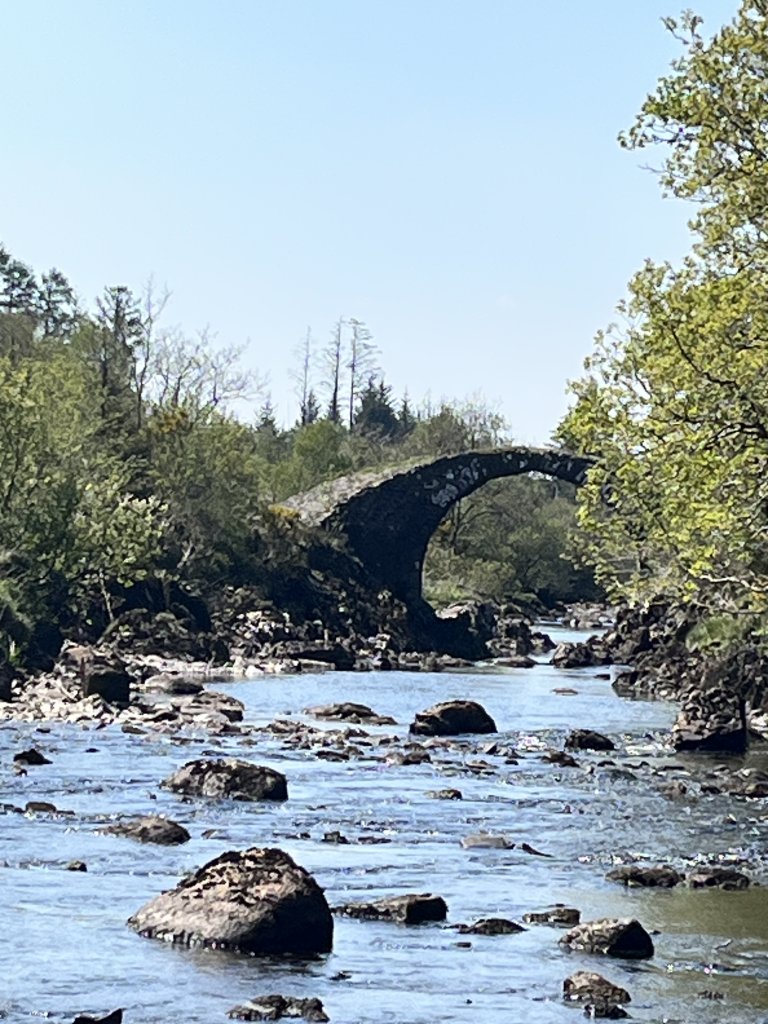
The bridge was different this time.
Sunlight streamed down in summer intensity. Jane stood on its centuries old arch.
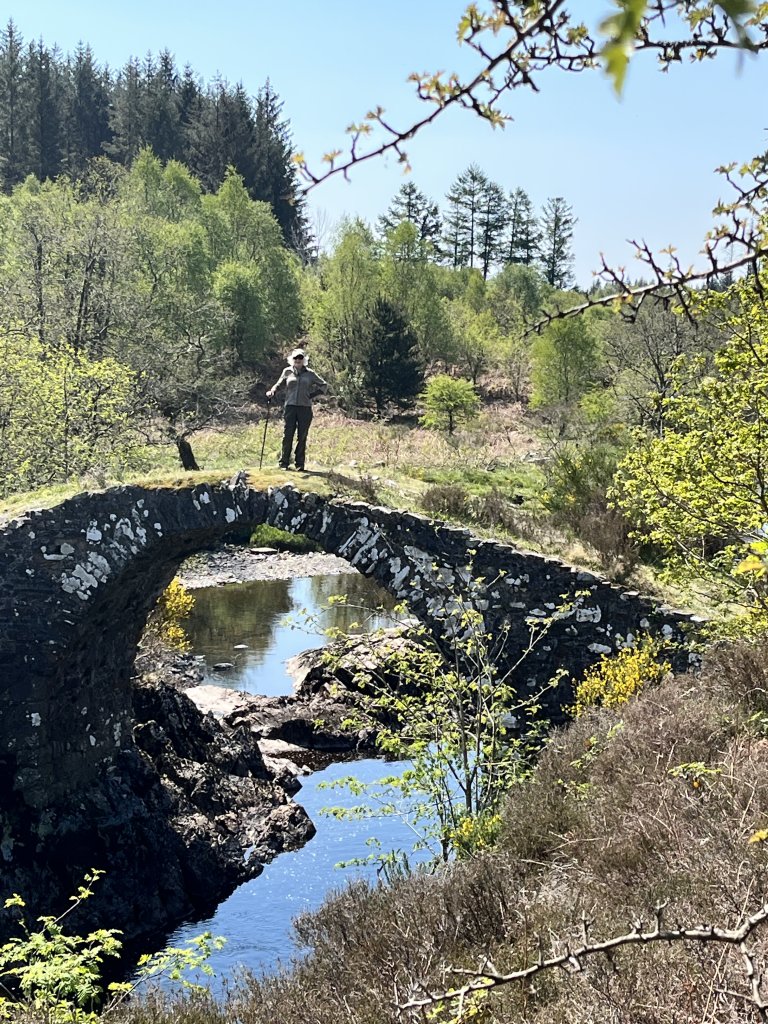
The mid May heat had brought out sturdy Scottish bluebells. They hadn’t bloomed when I was there last.
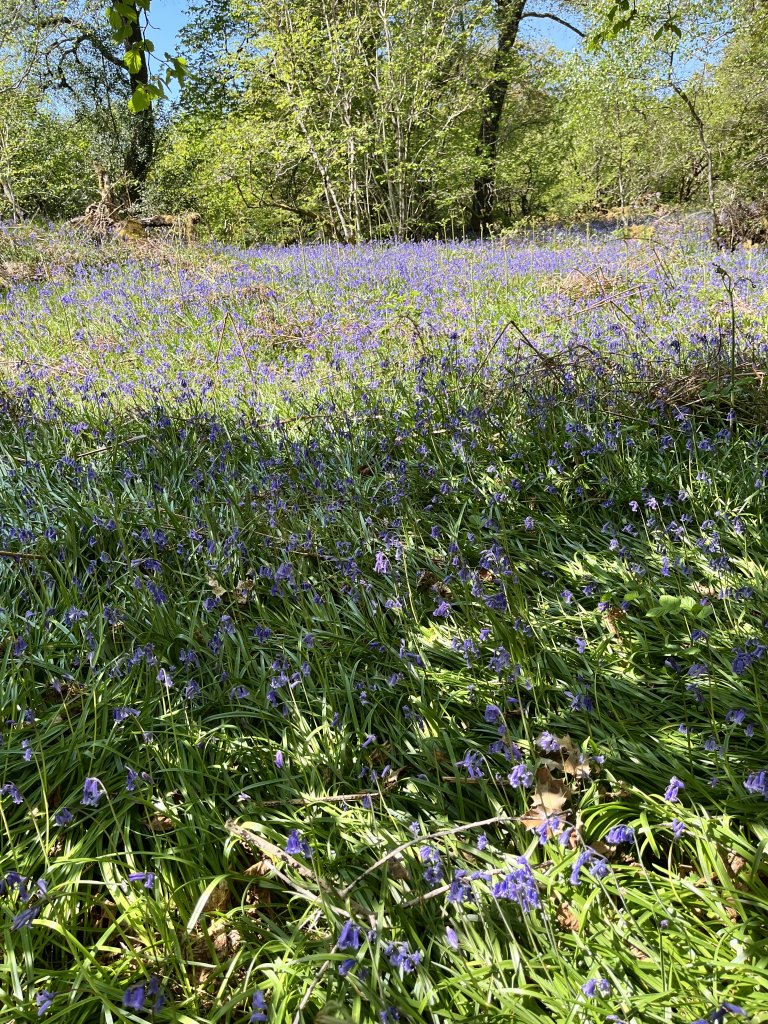
The forest field was dotted with stellaria…
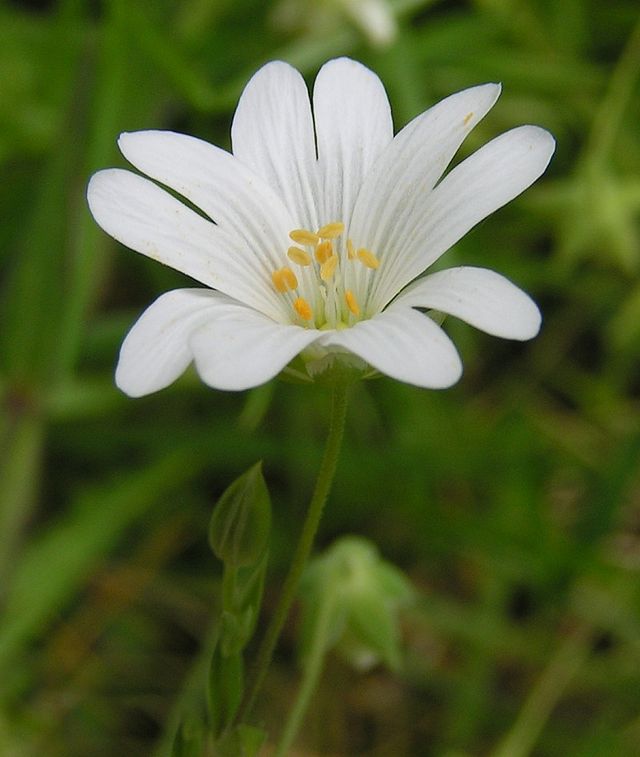
… better known as starwort or stitchwort.
The bridge is now also newly framed with whin and tinged with coconut fragrance from the equally yellow gorse.
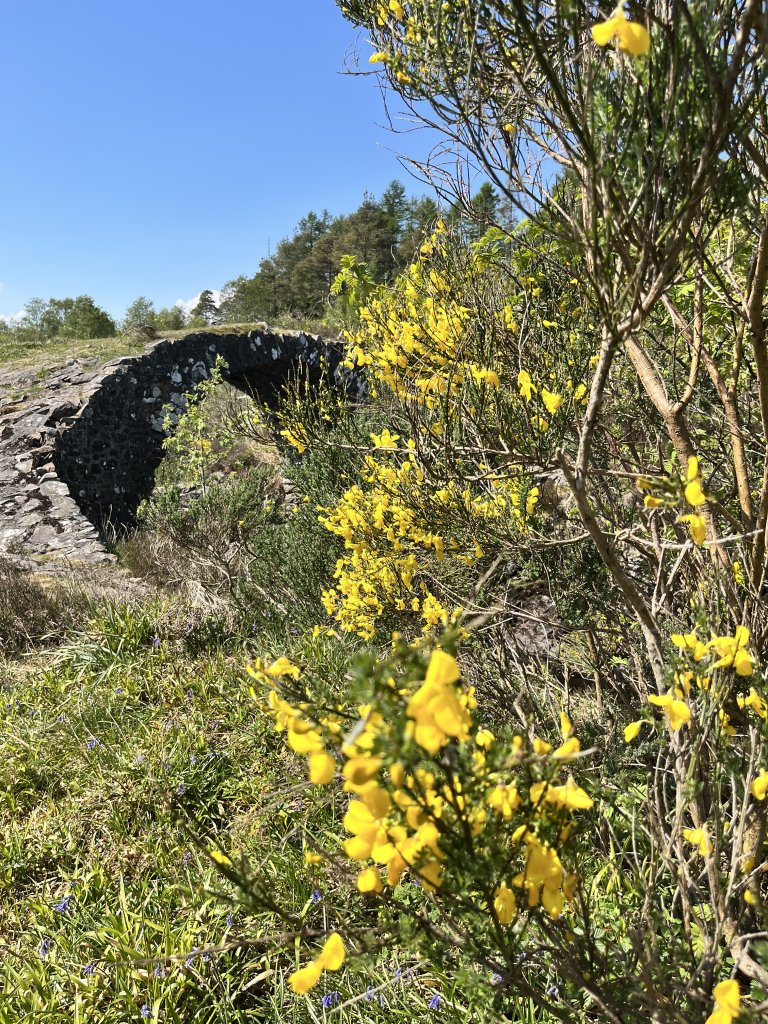
And since my initial visit, I’ve found the stonework goes by many names. On my dependable Ordnance Survey map…
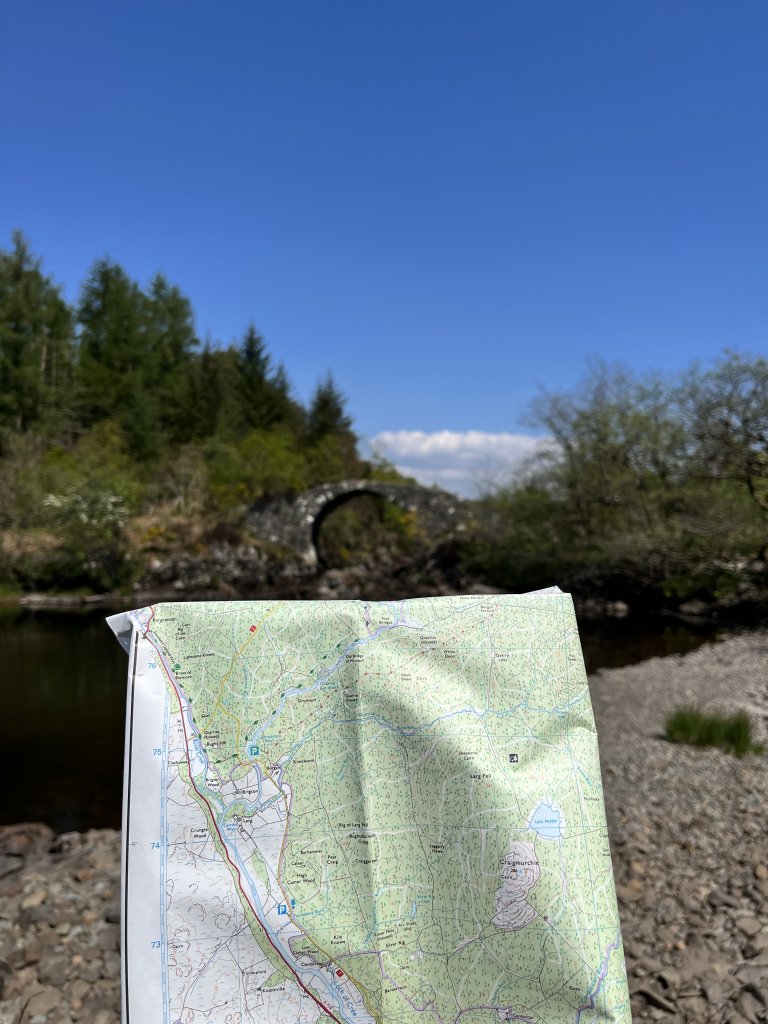
…it’s called Old Bridge. Other sources identify it as Roman Bridge, Romany Bridge, Minnoch Bridge, Packhorse Bridge or The Water of Minnoch Bridge.
But whatever it’s called, one thing is certain. It’s different this time. Heraclitus, a Greek writer from 2600 years ago, advised that you can’t step into the same river twice. To re-work his words, you can’t walk over the same bridge twice either. Things are always different. Or always seem different.
This time, for instance, coming from the north, rather than the south, I notice a farm on the east side of the winding river. I didn’t see it the last time I passed by.
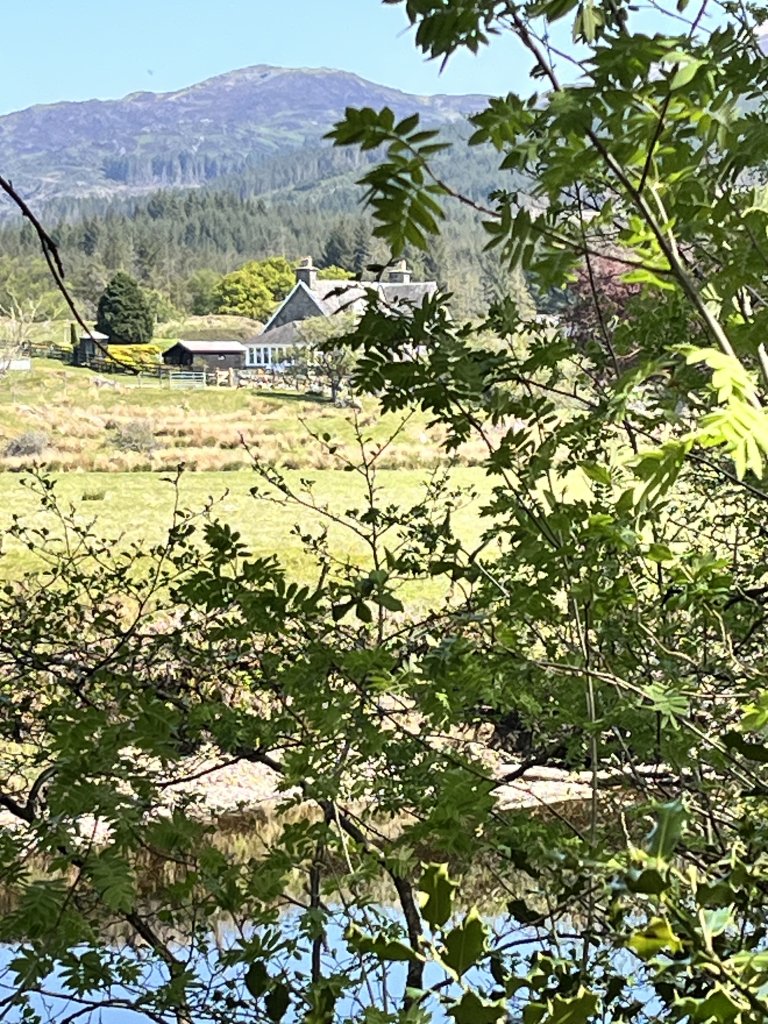
It must have been there for centuries. Maybe this was a modern successor to a medieval steading built in the distant past.
And maybe way back when, that was the reason that the old bridge was built. To connect a remote farm to the world. To bring things in. To carry things out. To connect a secluded valley in a corner of southwest Scotland as the world turned around it.
Maybe there’s just too many questions about this bridge with too many names and so little known about it. Maybe we should just settle down and visit the official records, and look at the rock solid facts on the Canmore website. It contains more than 1.3 million entries for Scottish archaeological sites.
For our river arch, officially called NX37NE 6 37334 75934, it simply states:
“A 17th or 18th century bridge locally alleged to be Roman.
RCAHMS 1914, visited 1911. A pack horse bridge without parapets. Visited by OS April 1976.”
And that’s all she wrote, folks. That’s the official facts, according to august bodies such as RCAHMS (I leave it to my betters to discover exactly what that arcane body is). All else, I guess, is writ on water, etched by imagination, scripted in mist, described on websites. Our old pal Heraclitus would have shrugged, shook his head and walked on.




Robert
RCAHMS explained: https://scotlandsplaces.gov.uk/digital-volumes/rcahms-archives
William Kerr
Very interesting, PS The Royal Commission for/of Ancient and Historical Monuments in/of Scotland. 😊
Shawn Richards
Looks like a pretty cool location for pondering things said by Greeks in ancient times………..
Martin McCrindle
“Burn your bridges behind you. It’s the only way forward.” Fritjof Nansen.
Just thought I’d share😁
Pablo
Any fish in the Minnoch? It looks pretty clean
DM
So much history hidden away!
Subscribe to new posts.